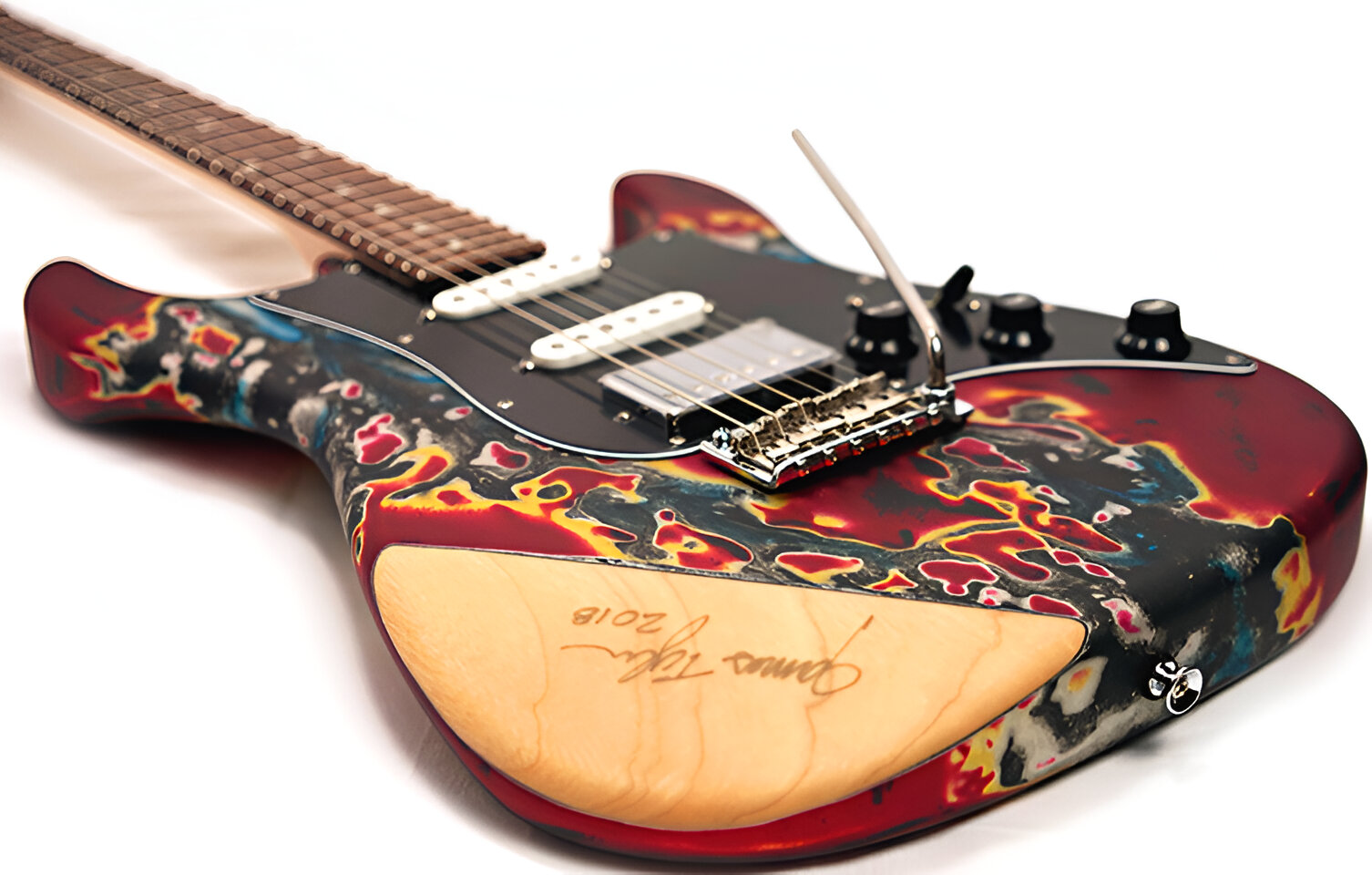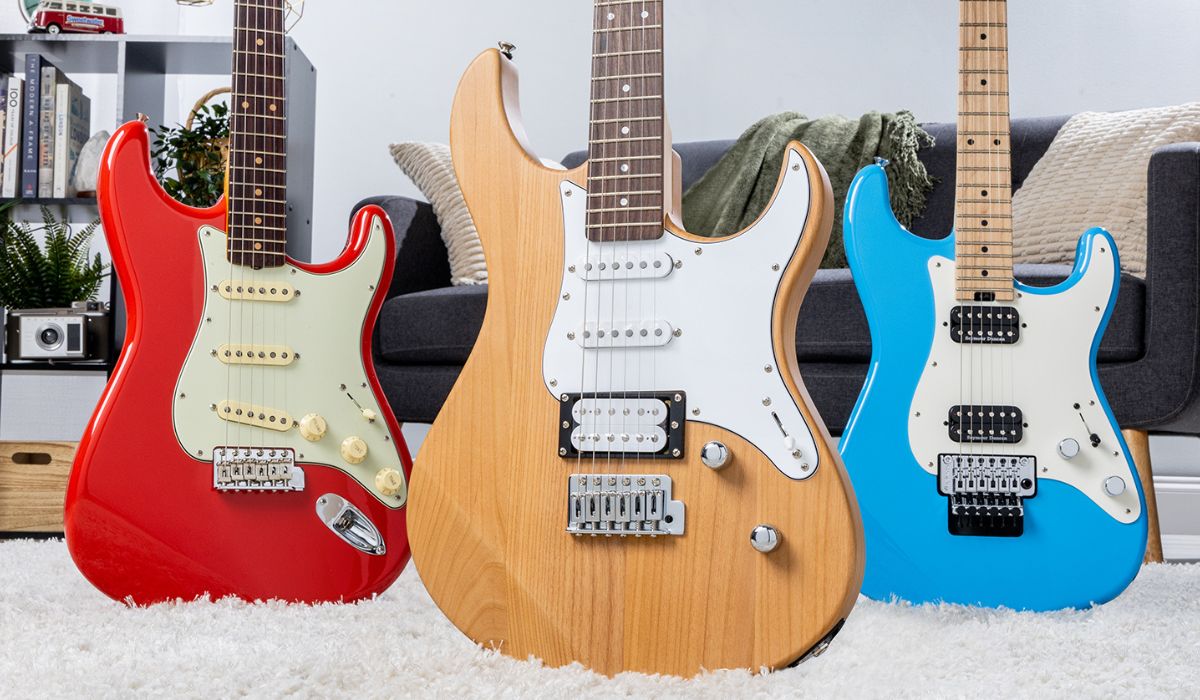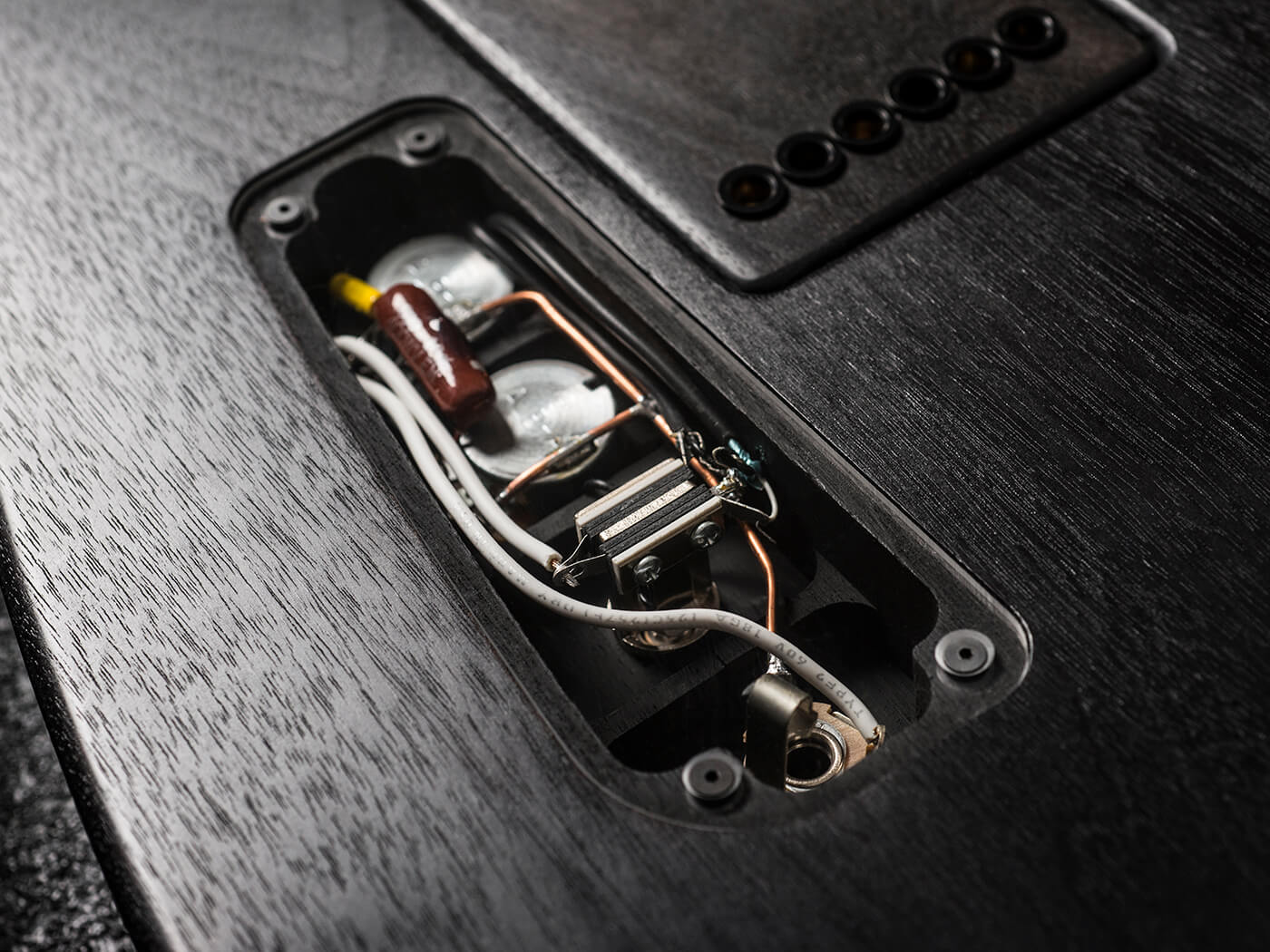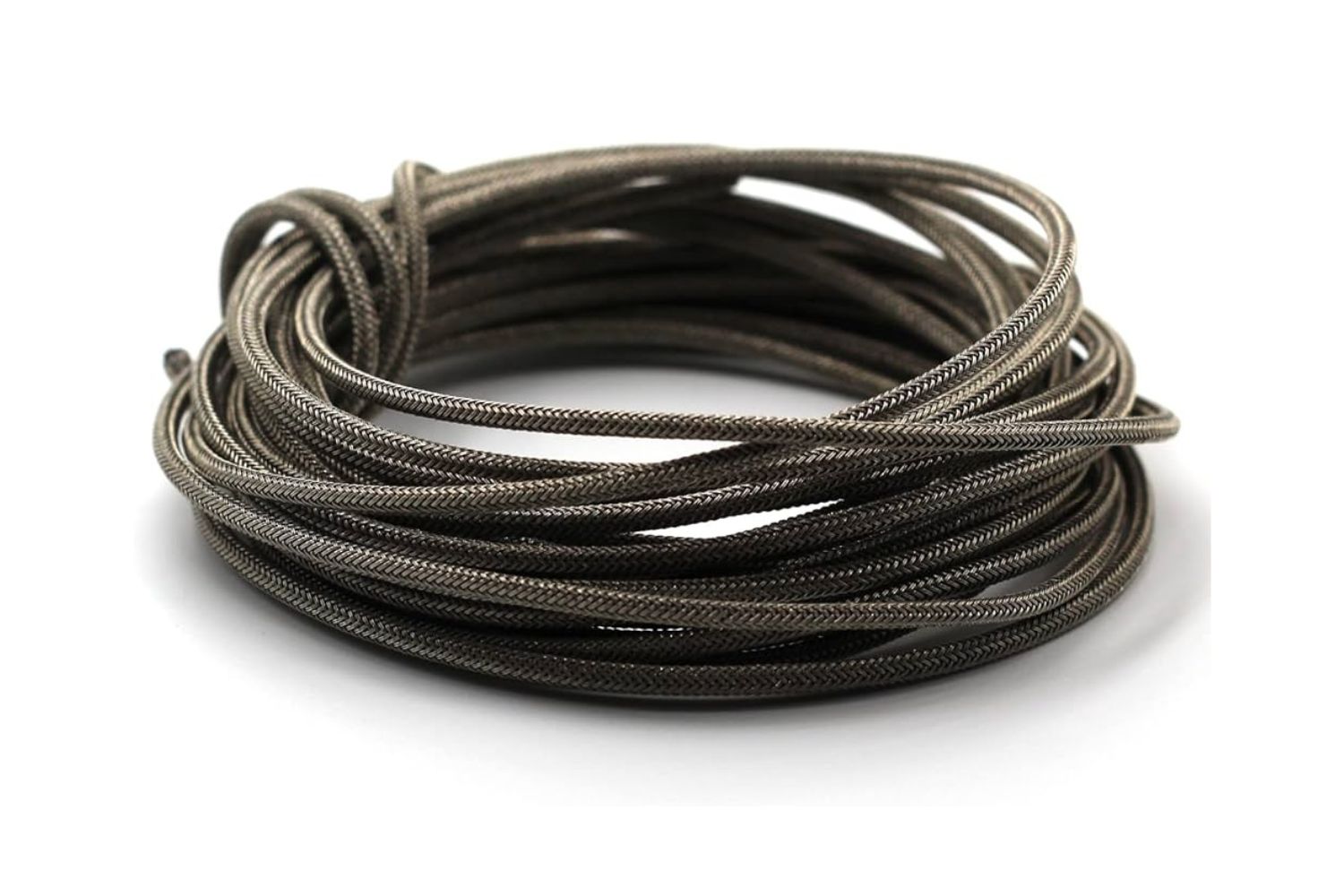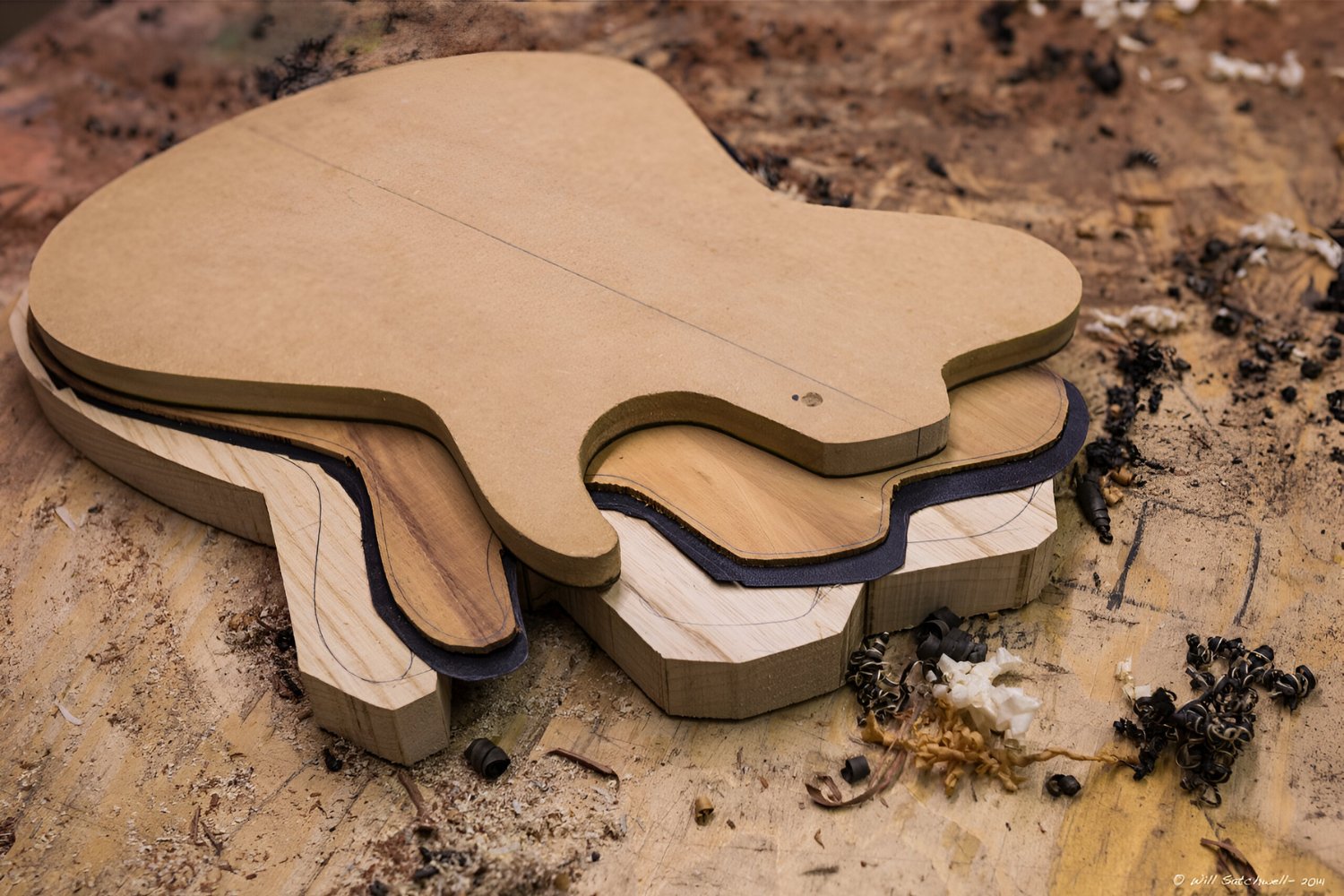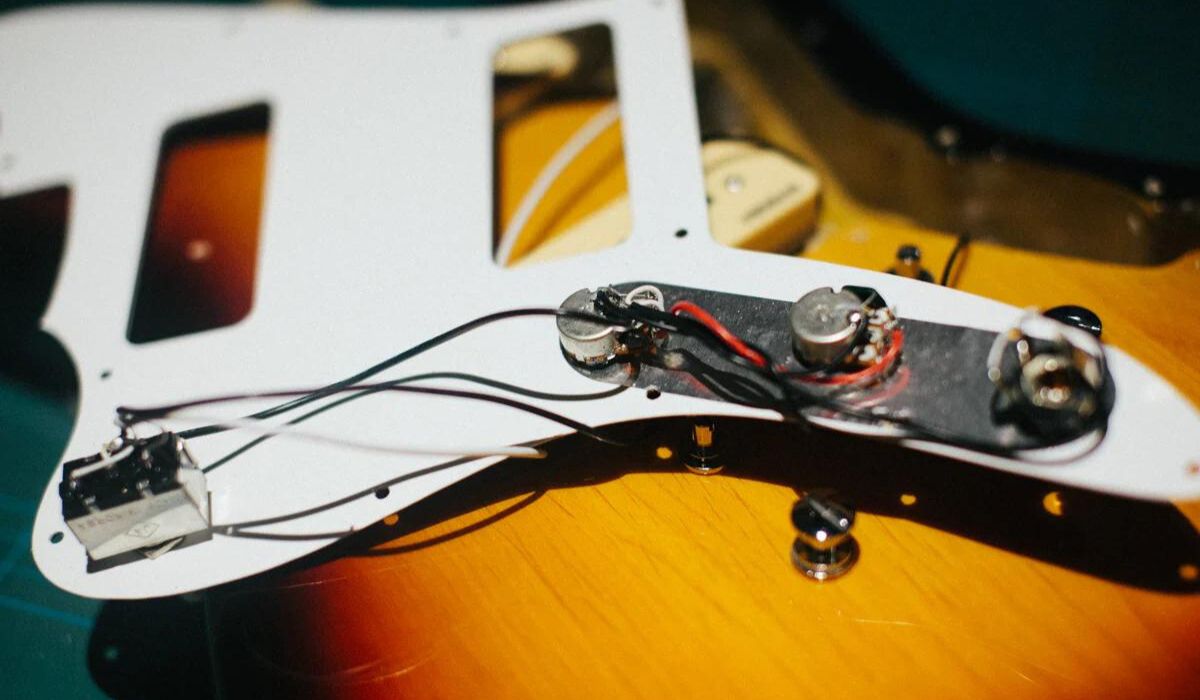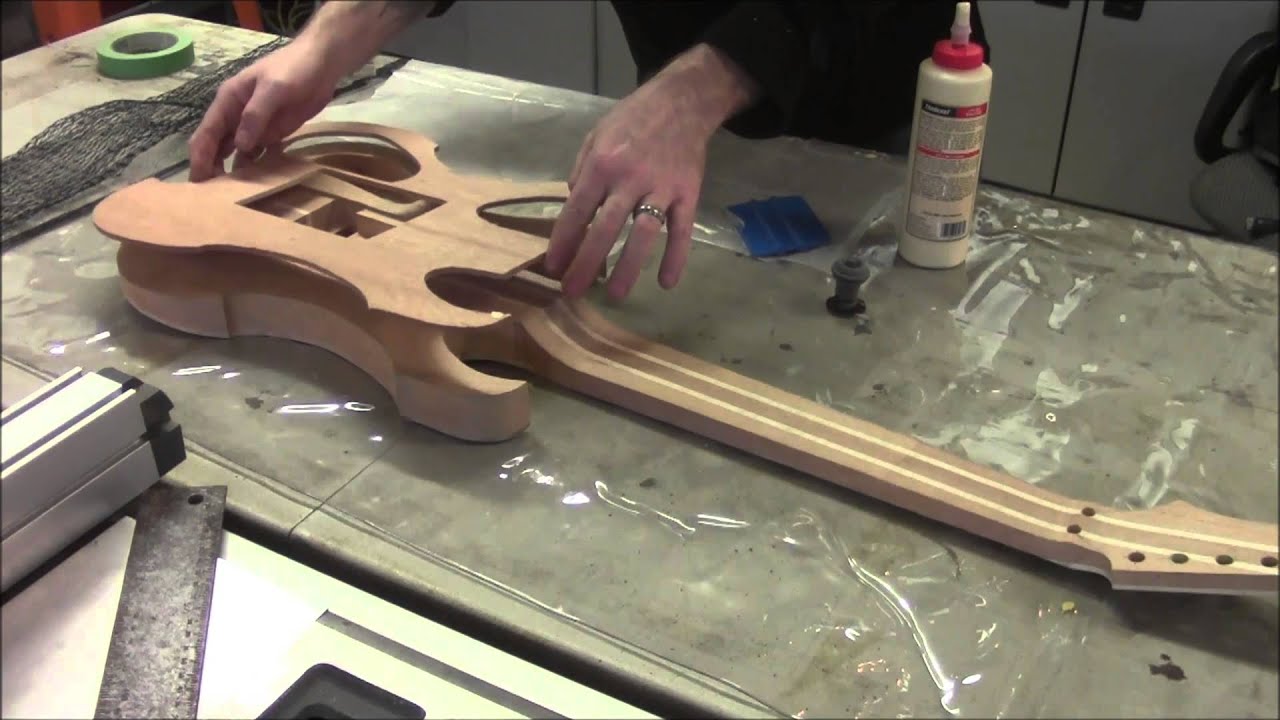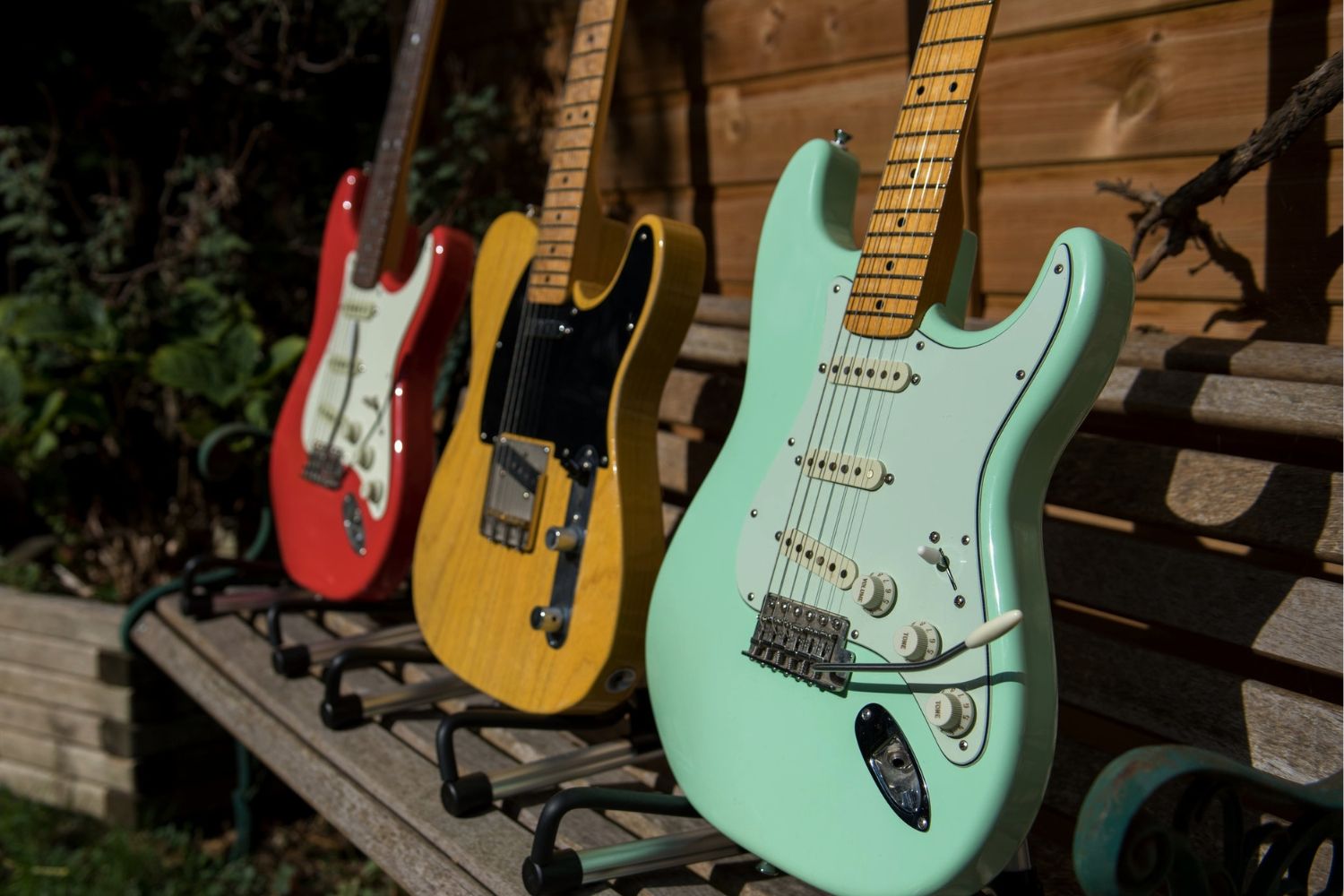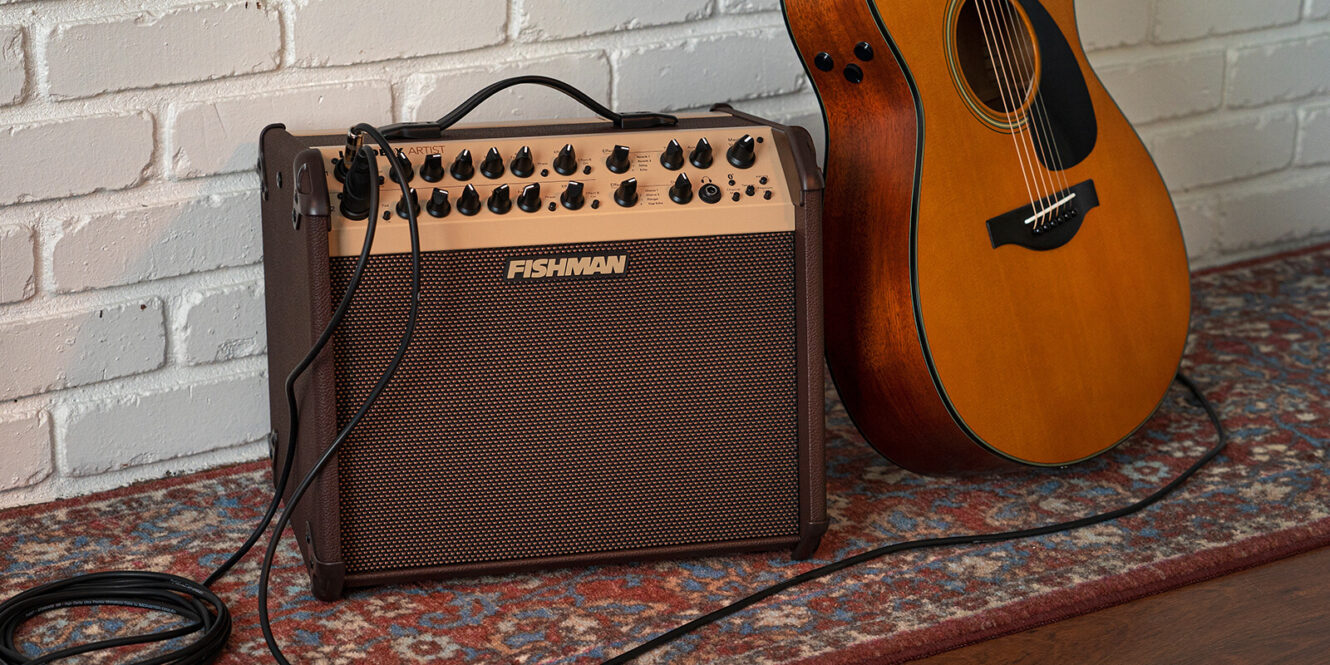Introduction
So, you've just purchased an electric guitar and you're eager to make it truly your own. Customizing an electric guitar can not only enhance its appearance but also improve its sound and playability. Whether you're a seasoned musician or a novice player, personalizing your instrument can be a rewarding and creative endeavor. From selecting the right guitar to making modifications that suit your style, this guide will walk you through the process of customizing your electric guitar.
Customizing an electric guitar is a fantastic way to express your individuality and make a statement on stage or in the studio. It allows you to tailor the instrument to your specific playing style and sonic preferences. Whether you're drawn to the classic twang of country music, the searing tones of rock and metal, or the smooth sounds of jazz, customizing your guitar can help you achieve the perfect sound.
In this guide, we'll explore the various aspects of customizing an electric guitar, from choosing the right instrument to making modifications that reflect your personality and musical tastes. We'll delve into the world of guitar customization, covering everything from upgrading pickups to adjusting the neck and bridge. By the end of this journey, you'll have the knowledge and inspiration to transform your electric guitar into a unique and personalized instrument that reflects your musical identity. So, let's dive in and discover the art of customizing an electric guitar!
Choosing the Right Electric Guitar
Before diving into the customization process, it’s crucial to select the right electric guitar as the foundation for your project. With a myriad of options available, choosing the perfect instrument can be both exciting and overwhelming. Consider factors such as body shape, tonewoods, pickups, and hardware to ensure that the guitar aligns with your musical preferences and customization goals.
When selecting an electric guitar, the body shape plays a significant role in both aesthetics and comfort. Whether you prefer the iconic curves of a Stratocaster, the timeless design of a Les Paul, or the modern sleekness of a Superstrat, the body shape should resonate with your personal style and playing comfort. Additionally, the choice of tonewoods can influence the guitar’s sound and resonance. For instance, mahogany is renowned for its warm and rich tones, while alder offers a balanced and versatile sonic profile.
Furthermore, the pickups installed in the guitar can profoundly impact its sound. Single-coil pickups are celebrated for their bright and articulate tones, ideal for genres like blues and surf rock, while humbuckers deliver a thicker and more powerful sound, favored in hard rock and metal. Consider the type of music you play and the tonal characteristics you desire when evaluating the pickup configuration of the guitar.
Hardware components, such as the bridge, tuners, and controls, also contribute to the overall performance and functionality of the instrument. A stable and reliable bridge system is essential for tuning stability and intonation, especially if you plan to incorporate aggressive playing techniques. Smooth and precise tuners ensure quick and accurate tuning adjustments, while intuitive control layout enhances the guitar’s playability.
Ultimately, the right electric guitar should resonate with your musical vision and serve as a canvas for your customization aspirations. Whether you opt for a vintage-inspired model or a contemporary powerhouse, selecting a guitar that aligns with your playing style and sonic preferences sets the stage for a fulfilling customization journey.
Customizing the Body
Customizing the body of an electric guitar offers a creative outlet to personalize its appearance and enhance its visual appeal. From vibrant finishes to unique artwork, there are various ways to transform the guitar’s exterior to align with your individual style and artistic expression.
One of the most common methods of customizing the body is through refinishing or repainting. Whether you desire a sleek solid color, a dazzling metallic finish, or an eye-catching graphic design, refinishing the guitar allows you to make a bold visual statement. This process involves stripping the existing finish, sanding the body, applying primer and paint, and finally, sealing the new finish with a protective topcoat. It’s essential to exercise caution and precision during this process to achieve a professional and durable result.
For those seeking a more intricate and personalized touch, custom artwork and graphics can be applied to the guitar’s body. Whether it’s a striking mural, intricate pinstriping, or a meaningful symbol, custom artwork can imbue the instrument with a unique and personal narrative. Many skilled artists and luthiers specialize in hand-painting or airbrushing guitars, providing a bespoke touch that sets your instrument apart from the rest.
Beyond finishes and artwork, modifying the body shape or contours of the guitar can also be considered. Whether it’s adding a forearm contour for enhanced comfort, sculpting a new ergonomic body shape, or incorporating custom inlays, these modifications can elevate the guitar’s aesthetics and ergonomics. However, it’s crucial to engage experienced professionals for such alterations to ensure structural integrity and optimal playability.
Additionally, accessorizing the guitar with custom pickguards, control knobs, and hardware can further personalize its appearance. Whether it’s a vintage-inspired tortoiseshell pickguard, ornate metal knobs, or custom hardware finishes, these details contribute to the overall visual impact of the instrument.
Customizing the body of an electric guitar is a captivating endeavor that allows you to infuse your personality and creativity into the instrument. Whether it’s a subtle refinement or a bold transformation, the body customization process empowers you to craft a visually stunning and uniquely personalized guitar that reflects your artistic vision.
Upgrading the Pickups
Upgrading the pickups of an electric guitar is a pivotal customization that can significantly influence its tonal characteristics and sonic versatility. Whether you seek searing high-gain tones, vintage-inspired warmth, or pristine cleans, selecting the right pickups can redefine the instrument’s sonic identity and responsiveness.
Single-coil pickups are renowned for their bright and articulate sound, ideal for genres such as blues, surf rock, and country. They exhibit a clear and transparent tonal quality, often characterized by their distinct midrange presence and crisp treble response. However, single-coil pickups are susceptible to hum and electromagnetic interference, especially in high-gain settings.
On the other hand, humbuckers offer a thicker and more powerful sound with enhanced sustain and reduced noise. Popular in rock, hard rock, and metal genres, these dual-coil pickups deliver a robust low end, pronounced midrange, and smooth high-end response. They excel in high-gain scenarios, providing a punchy and aggressive sonic character.
Furthermore, there are specialized pickups tailored to specific genres and playing styles. P-90 pickups, for example, offer a unique blend of single-coil snap and humbucking warmth, making them suitable for blues, rock, and alternative music. Additionally, active pickups, powered by a preamp, deliver high output and extended tonal shaping capabilities, catering to the demands of modern metal and progressive styles.
When upgrading pickups, it’s essential to consider the magnet type, wire gauge, and coil configuration to achieve the desired tonal nuances. Alnico magnets, known for their warmth and vintage character, are often favored for classic rock and blues applications, while ceramic magnets offer a tighter and more aggressive sound suitable for high-gain genres.
Ultimately, upgrading the pickups allows you to tailor the guitar’s sound to your specific musical preferences and playing style. Whether it’s achieving vintage warmth, modern aggression, or sonic versatility, selecting the right pickups can redefine the instrument’s sonic identity and inspire new creative possibilities.
Adjusting the Neck and Bridge
Ensuring the optimal setup of the neck and bridge is crucial for achieving excellent playability, intonation, and overall performance on an electric guitar. Proper adjustments in these areas not only enhance the instrument’s comfort and ease of play but also contribute to its tonal clarity and sustain. Understanding the significance of neck relief, action, and intonation empowers you to fine-tune the guitar to suit your playing style and preferences.
Neck relief, or the slight curvature of the neck, plays a vital role in determining the guitar’s playability and responsiveness. Adjusting the truss rod allows you to control the amount of neck relief, ensuring that the strings have sufficient clearance over the frets without causing fret buzz. A well-adjusted neck relief facilitates comfortable fretting and bending, contributing to a smooth and enjoyable playing experience.
Furthermore, setting the string action, or the height of the strings above the fretboard, influences the guitar’s playability and tonal response. Lower action facilitates effortless fretting and fast playing, while higher action can enhance sustain and resonance. Finding the ideal balance that suits your playing style and technique is essential for achieving optimal comfort and control over the instrument.
Intonation, the accuracy of the guitar’s fretted notes across the entire fretboard, is another critical aspect of the setup. Proper intonation adjustments ensure that the instrument produces harmonically accurate pitches, allowing chords and notes to ring true and in tune along the entire length of the neck. Fine-tuning the saddle positions on the bridge ensures that each string length is precisely calibrated, mitigating pitch discrepancies and enhancing the guitar’s overall tuning stability.
Additionally, the bridge setup, including tremolo systems and fixed bridges, plays a significant role in tuning stability and string action. Adjusting the bridge height, spring tension, and pivot points on tremolo systems enables you to customize the guitar’s responsiveness to whammy bar manipulations and vibrato techniques. On fixed bridges, individual saddle adjustments allow for precise intonation and string height customization.
By understanding and implementing these adjustments, you can tailor the electric guitar to your playing preferences, ensuring that it delivers exceptional playability, tonal clarity, and tuning stability. Whether it’s achieving effortless bends, pristine intonation, or reliable tuning, the careful adjustment of the neck and bridge elevates the instrument’s performance and responsiveness to new heights.
Adding Personal Touches
Infusing your electric guitar with personal touches goes beyond mere aesthetics; it’s an opportunity to imbue the instrument with your unique identity and creative spirit. From custom hardware and electronics to personalized accessories, adding personal touches allows you to create a guitar that resonates with your individuality and enhances your connection to the instrument.
One of the most impactful ways to personalize your guitar is through custom hardware and electronics. Upgrading the control knobs, switch tips, and pickup covers with bespoke components can impart a distinct visual character to the instrument. Whether it’s vintage-inspired knurled knobs, ornate metal covers, or custom-colored hardware, these details contribute to the guitar’s visual allure and tactile appeal.
Custom electronics, such as tone capacitors and potentiometers, offer opportunities to fine-tune the guitar’s tonal nuances and responsiveness. Experimenting with different capacitor values and potentiometer tapers allows you to tailor the instrument’s sonic characteristics to your preferences, whether it’s achieving smoother volume swells, enhanced treble response, or dynamic tonal shaping capabilities.
Personalized accessories, such as custom pickguards, truss rod covers, and neck plates, offer avenues to further individualize the instrument. Whether it’s a handcrafted wooden pickguard, a laser-engraved truss rod cover, or a personalized neck plate, these accessories add a touch of exclusivity and personalization to the guitar, elevating its visual and sentimental value.
Customizing the guitar’s hardware and electronics not only enhances its visual appeal but also allows you to fine-tune its sonic characteristics to align with your musical preferences and playing style. Whether it’s achieving vintage warmth, modern aggression, or nuanced tonal versatility, these personalized components contribute to the instrument’s sonic identity and responsiveness.
Another avenue for personalization is through custom engravings or inlays. Whether it’s engraving the headstock with a meaningful symbol, adding custom fretboard inlays, or incorporating a signature graphic on the body, these artistic embellishments infuse the instrument with a personal narrative and visual distinction. Many luthiers and artisans specialize in custom engraving and inlay work, offering bespoke designs that reflect your unique story and artistic vision.
By adding personal touches to your electric guitar, you transform it into a reflection of your musical journey, artistic expression, and individuality. Whether it’s through custom hardware, electronics, accessories, or artistic embellishments, these personal touches elevate the instrument from a mere tool to a cherished and expressive extension of your creative identity.
Conclusion
Customizing an electric guitar is a deeply personal and rewarding journey that allows you to transform a musical instrument into a unique and expressive extension of your artistic identity. From selecting the right guitar to refining its aesthetics, sonic characteristics, and playability, the process of customization empowers you to tailor the instrument to your individual preferences and creative vision.
Choosing the right electric guitar sets the foundation for your customization project, ensuring that the instrument aligns with your musical style and aspirations. Whether it’s the body shape, tonewoods, or pickups, selecting a guitar that resonates with your sonic preferences and playing comfort is essential for a fulfilling customization journey.
Customizing the body of the guitar offers a canvas for artistic expression, allowing you to infuse the instrument with personalized finishes, artwork, and modifications that reflect your individual style and narrative. Whether it’s a vibrant new finish, custom artwork, or unique body contours, these visual enhancements imbue the guitar with a distinct and personal character.
Upgrading the pickups and fine-tuning the neck and bridge components are pivotal steps in shaping the guitar’s sonic identity and playability. Whether it’s achieving vintage warmth, modern aggression, or nuanced tonal versatility, these adjustments allow you to tailor the instrument’s sound and responsiveness to your musical preferences and playing style.
Adding personal touches, such as custom hardware, electronics, and accessories, further individualizes the guitar, infusing it with your unique artistic vision and creative spirit. These personalized embellishments elevate the instrument from a standard production model to a cherished and expressive extension of your musical journey.
Ultimately, the art of customizing an electric guitar is a testament to the fusion of craftsmanship, creativity, and personal expression. It’s a journey that transcends the mere modification of an instrument; it’s a narrative of self-discovery, artistic exploration, and the celebration of individuality through the universal language of music. As you embark on your own customization odyssey, may your electric guitar become a reflection of your passion, creativity, and musical identity.







